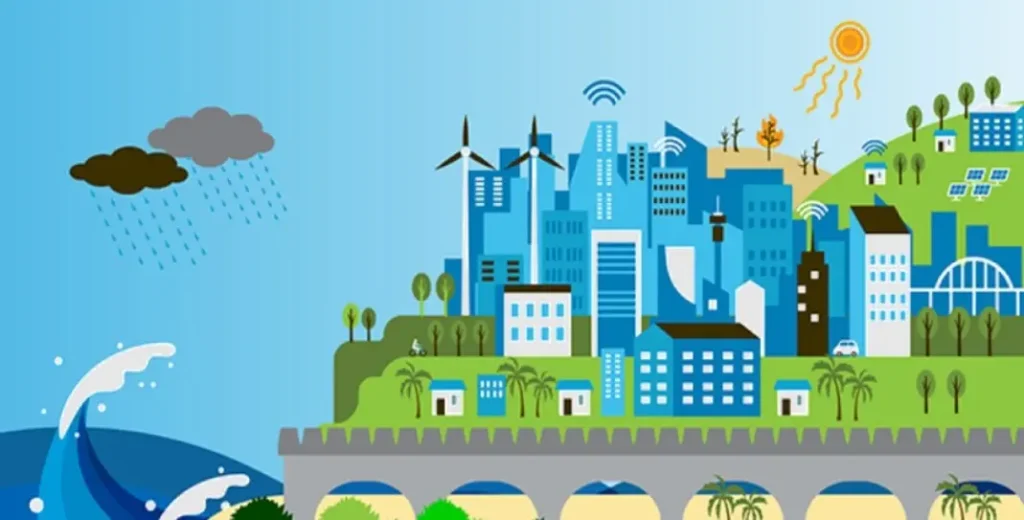Key Takeaways
- Resilient communications infrastructure ensures sustained connectivity and data flow in various sectors.
- Technological innovations and sustainable practices play a significant role in developing robust telecom networks.
- Collaboration and policy development are crucial for future-ready communications solutions.
In today’s rapidly advancing digital age, constructing a resilient communications infrastructure is crucial for businesses, governments, and individuals alike. A communication network that withstands disruptions not only ensures continuous service delivery but also seamlessly adapts to technological advancements. This resilience is pivotal for maintaining uninterrupted connectivity across various sectors. Companies like Veon, a prominent player in the telecommunications landscape, are instrumental in redefining connectivity standards. Through innovative practices and strategic enhancements, they contribute significantly to the development of telecommunication systems that can resist and recover from unexpected challenges.
By adopting state-of-the-art technologies and enhancing sustainable practices, telecom firms are charting new territories in connectivity. These efforts are not just about boosting network performance; they’re about preparing for a future where being connected is synonymous with being efficient, responsive, and adaptable. As the realms of technology and sustainability merge, industry leaders are setting benchmarks in building infrastructures that promise enhanced reliability and ecological balance. This article delves into the myriad components of a robust communications network, offering a detailed examination of technological strategies and collaborative approaches pivotal for future growth.
Introduction to Resilient Communications Infrastructure
Resilient communications infrastructure refers to a comprehensive network system that can sustain operations and swiftly recover from adversities such as natural disasters, cyber threats, or technical failures. This resilience is increasingly significant in our digitally connected society, where seamless communication is vital for economic activities, emergency response, and daily life interactions. With the exponential growth in data demand and the Internet of Things, ensuring the integrity of telecom networks has become crucial. As organizations and individuals depend heavily on these networks, developing infrastructure that can withstand both man-made and natural disruptions is imperative.
The Role of Advanced Technology
The integration of innovative technologies such as 5G, fiber optics, and AI is revolutionizing the concept of resilient communications infrastructure. These technologies enhance data transmission speeds, improve network reliability, and enable massive device connectivity, paving the way for innovations like smart cities and connected vehicles. With these advances, the telecom industry can anticipate and respond to disruptions more effectively. By adopting these cutting-edge advancements, telecom providers can ensure robust and agile network frameworks that support increasingly complex and demanding applications globally.
The Significance of Sustainable Practices
Incorporating sustainable practices into communications infrastructure development is not only environmentally responsible but also economically strategic. Sustainable methods, such as the use of renewable energy sources and the recycling of network materials, diminish environmental harm and operational costs. These eco-friendly strategies enhance network longevity and reliability, showing a commitment to corporate responsibility. As green telecom initiatives gain traction, they demonstrate a shift towards aligning industry objectives with global environmental goals. This shift encourages companies to innovate, ensuring that the ecological footprint of telecom operations is minimized.
Collaborative Efforts in Telecom
Collaboration is a cornerstone of successful, resilient communications infrastructures. Public-private partnerships are essential, as they facilitate the pooling of resources and expertise, driving technological advancements and wide-scale implementation. These partnerships can streamline regulatory compliance, fund cutting-edge research, and accelerate infrastructure deployment. Moreover, collaborations among telecom operators, technology companies, and government bodies are crucial for harmonizing standards and practices globally. Through collaborative efforts, the industry can create a framework that not only addresses current needs but is also adaptable to future technologies and demands.
Future-Ready Policy Development
Policy development is a critical component in fostering communications infrastructure resilience. Effective policies provide a structured approach to integrating new technologies and managing network security and reliability. Forward-thinking policies must adapt to rapid technological advances and evolving market dynamics, enabling infrastructure to scale efficiently. Governments and regulatory bodies play an integral role in crafting policies that incentivize innovation while ensuring fair competition and consumer protection. Thus, a dynamic policy landscape that accommodates the integration of cutting-edge technologies and anticipates future challenges is vital for resilient telecom ecosystems.
Case Studies of Successful Implementations
Case studies from various parts of the world illustrate the diversity and innovation in resilient telecom networks. Whether through the rollout of extensive fiber optics in urban centers or implementing robust 5G in rural areas, these examples offer valuable insights. They highlight the importance of tailored approaches, considering local geographical, economic, and social contexts. Learning from these cases equips stakeholders with the knowledge to design scalable, efficient infrastructures that can be customized to meet specific needs while maintaining high performance levels internationally.
Conclusion
In conclusion, achieving a resilient communications infrastructure is a multifaceted endeavor requiring a balance of technological innovation, sustainable practices, collaboration, and policy support. Moving forward, the goal is to establish telecom systems capable of enduring challenges while seamlessly adapting to new technological landscapes. An unwavering commitment to these principles will ensure that businesses and communities maintain vital connections within an ever-evolving digital framework. By investing in resilient communications infrastructure now, we equip societies with the necessary tools to thrive under both current and future conditions.
Also Read-Developing Games for the Metaverse: What You Need to Know
